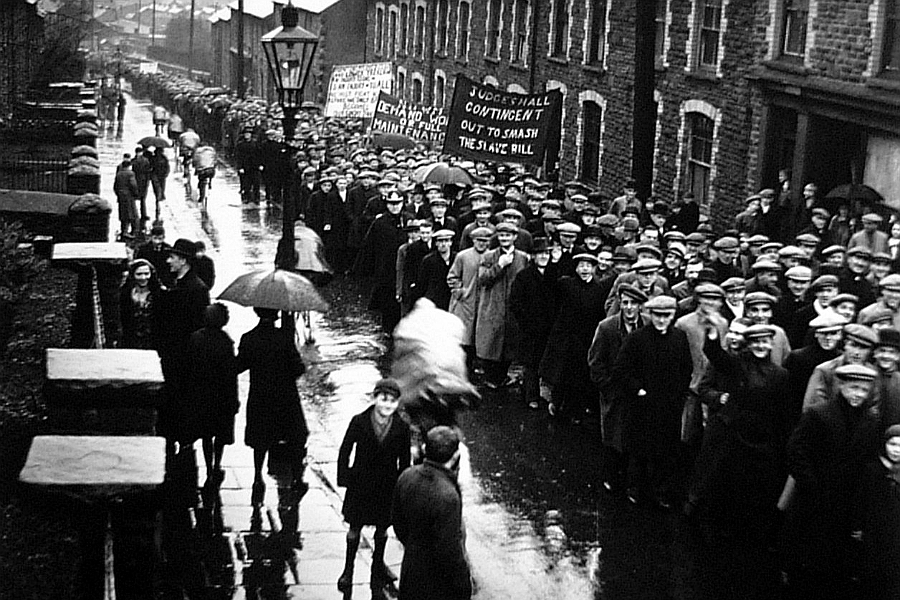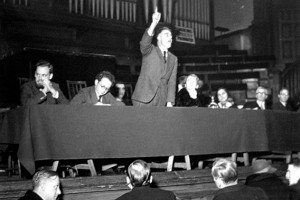Profile – Photographer Edith Tudor-Hart

The latest Open Eye Gallery archive exhibition highlights the life and times of Edith Tudor-Hart, photographer and spy…
Edith Tudor-Hart’s was a name which until Friday, we’re ashamed to say, we were – surprisingly – unfamiliar with. The subject of Open Eye Gallery’s latest archive exhibition, understatedly subtitled Quiet Radicalism, Tudor-Hart’s life was anything but a quiet one.
Born in 1908 in Vienna Edith Suschitzky (as she was then) made her name with photography, but much more than a photographer of renown, she would go on to lead a life of intrigue. Influenced (and inarguably) set on her way by a socialist family (her father, born into a Viennese Jewish community, was a book-publishing atheist), in 1929 she embarked on a photography course at the Bauhaus school in Germany, studying under the celebrated Walter Peterhans.
But three years earlier – if there was any doubt that her upbringing was a major influence on her work and life – she met with Soviet spy Arnold Deutsch, with whom she would go on to work with in Communist organisation, the International Liaison Department of the Comintern.
For much of the 30s, Tudor-Hart’s work, informed by her politics, focussed on capturing unrest in Vienna (in the form of street conflict and protest movements motivated by high levels of unemployment), but come 1933 (and following her marriage to British doctor Alex Tudor-Hart), her attention necessarily switched, as her growing involvement in Communism (and the small matter of her Jewish ancestry) began to catch up with her, fleeing Vienna for the UK to avoid persecution.
If some people might have kept a low profile at this point and concentrated their attention on work (work that didn’t highlight social injustices for that matter), Tudor-Hart ramped up her potential for subversion, becoming a crucial component of the Cambridge Spy Ring (an organisation actively passing information to the Soviet Union and famed for the involvement of British intelligence officer turned KGB member Kim Philby). Instrumental in recruitment and taking part in various espionage missions she may have been, but Tudor-Hart still found the time for photography, which increasingly began to look at social issues in Britain.

In London in 1935 she shot a protest meeting against oppression and persecution in Germany (above) and the same year highlighted the plight of coal miners in South Wales where her doctor husband was working as a GP. Rather than be scared off by challenging subject matter, the outstanding quality of her work meant she was regularly commissioned by publications, such as The Listener, The Social Scene and Design Today. That subject matter – ranging from images of Spanish civil war refugees to shining a light on the inhumane living conditions for families in London – continued to find an audience, whether that be via readers of journals such as those mentioned above, or just as frequently in the form of propaganda pamphlets.
Then in 1936 Edith and Alex had a son, Tommy, who would later be diagnosed with schizophrenia. Once again, Tudor-Hart found life impacting her work, her lens shifting from social issues to, more specifically, the care and education of children. This period and chapter of her work is illustrated beautifully in the exhibition’s use of her images involving alphabet exercises used to encourage speechless children to speak, as well as those taken at London’s former Fountain Hospital in 1951, images that would go on to be used in campaigns for children with disabilities.
In later life, and despite the main focus of her work having already clearly shifted somewhat, Tudor-Hart continued to attract the attention of the authorities both at home and abroad. In fact, she came under increasing surveillance. This unwanted scrutiny led to a change of tack, Tudor-Hart moving increasingly away from anything which could be construed as subverting the status quo, and into the safer realm of commercial projects (often in advertising) before her death at the relatively young age of 64 in 1973.
But what a life she had led, significant swathes of which are captured wonderfully in this exhibition. The juxtaposition of the domestic images, depicting Tudor-Hart’s family life, with those featuring protest and the political at their hearts is a fascinating one, highlighting the extraordinary duality her existence posed, one which actually, is quite difficult to countenance. But the proof – some of it at least – is here for all to see, in Edith Tudor-Hart: Quiet Radicalism.
Edith Tudor-Hart: Quiet Radicalism continues at the Open Eye Gallery until the 5th May





